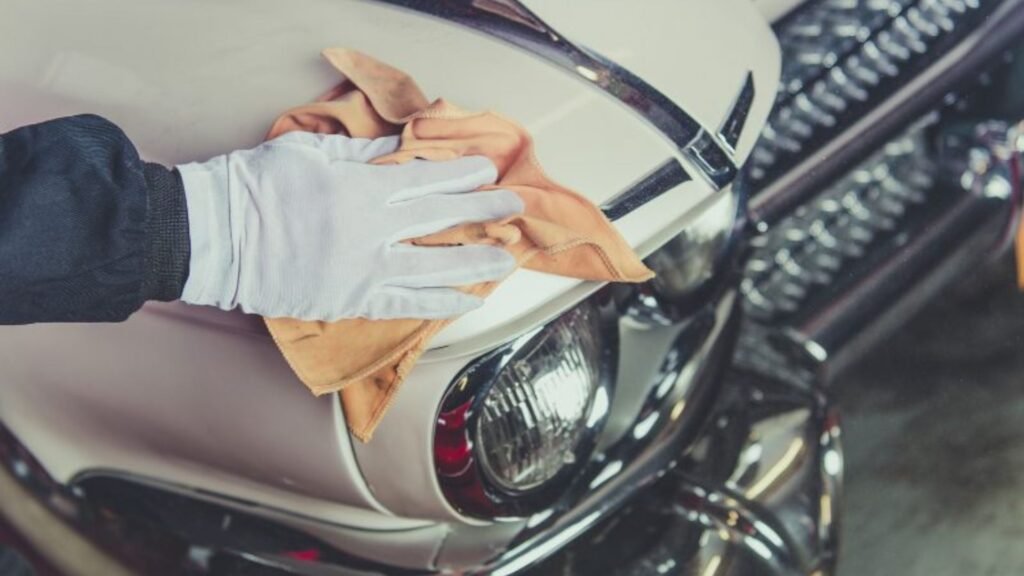Guide to Preservation Techniques for Vintage Cars
Preserving a vintage car is more than just a hobby; it’s a commitment to safeguarding a piece of automotive history. Unlike regular vehicles, vintage cars require special care and attention to maintain their integrity, functionality, and value. Whether you’re a seasoned collector or a new enthusiast, understanding the right preservation techniques is crucial. In this guide, we’ll explore the most effective ways to preserve your vintage car, ensuring it remains a cherished possession for years to come.

1. Regular Cleaning: Keeping the Exterior Pristine
Regular cleaning is the first step in preserving your vintage car. Dirt, dust, and grime can accumulate on the vehicle’s surface, leading to corrosion and damage over time. To prevent this, wash your car frequently using gentle, non-abrasive cleaners.
When washing, avoid high-pressure water hoses that can damage the car’s paint or trim. Instead, use a soft cloth or sponge to clean the exterior, paying special attention to areas where dirt tends to accumulate, such as the wheel wells and undercarriage. After washing, always dry the car thoroughly to prevent water spots and rust formation.
2. Proper Storage: Shielding from the Elements
Proper storage is essential for preserving your vintage car. Exposure to extreme weather conditions—whether it’s the scorching sun, heavy rain, or freezing temperatures—can cause significant damage over time. Therefore, storing your car in a climate-controlled environment is ideal.
If indoor storage isn’t available, consider using a high-quality car cover to protect your vehicle from the elements. Additionally, ensure that the storage area is clean, dry, and well-ventilated to prevent moisture buildup, which can lead to rust and mildew.
3. Routine Maintenance: Keeping the Engine and Mechanical Parts Healthy
Routine maintenance is key to keeping your vintage car running smoothly. Regular oil changes, fluid checks, and engine inspections are crucial for preventing mechanical issues. It’s important to use the correct type of oil and fluids, as specified by the car’s manufacturer, to ensure optimal performance.
Check the car’s belts, hoses, and wiring for signs of wear and tear, and replace them as needed. Additionally, run the engine periodically, even if you’re not driving the car regularly. This helps keep the engine lubricated and prevents parts from seizing due to inactivity.
4. Tire Care: Ensuring Longevity and Safety
Tires are often overlooked in preservation efforts, but they play a vital role in the safety and longevity of your vintage car. Over time, tires can develop flat spots if the car is stationary for long periods. To prevent this, consider using tire jacks or stands to lift the car off the ground, relieving pressure on the tires.
Regularly check tire pressure and inflate them to the recommended levels to avoid cracks and deterioration. If your car is stored for extended periods, rotating the tires occasionally can also help distribute wear evenly, extending their lifespan.
5. Protecting the Interior: Preserving Upholstery and Trim
The interior of your vintage car is just as important as the exterior when it comes to preservation. Sunlight can cause upholstery and trim to fade or crack over time. To protect the interior, use sunshades on the windows when the car is parked, especially if it’s stored outdoors.
Leather seats and trim require special care, so clean and condition them regularly with products designed specifically for automotive leather. For fabric interiors, vacuuming and spot-cleaning will help keep the upholstery in good condition. Additionally, consider using seat covers to protect the original material from wear and tear.
6. Preventing Rust: The Enemy of Vintage Cars
Rust is one of the biggest threats to vintage cars, especially for older models with less advanced corrosion protection. To prevent rust, keep your car clean and dry, and apply a protective wax coating to the exterior. This creates a barrier against moisture and contaminants that can cause rust to form.
Inspect the car regularly for any signs of rust, especially in areas prone to moisture buildup, such as the undercarriage and wheel wells. If you find any rust spots, address them immediately to prevent further damage. In some cases, professional rust treatment may be necessary to fully protect your vehicle.
7. Documentation and Records: Keeping a Detailed History
Finally, maintaining thorough documentation and records is an often-overlooked aspect of vintage car preservation. Keep a detailed log of all maintenance, repairs, and upgrades, as well as any historical information about the car. This not only helps you keep track of the car’s condition but also adds value if you decide to sell it in the future.
Proper documentation provides a clear history of the vehicle, demonstrating that it has been well cared for over the years. It can also help you plan future maintenance and preservation efforts, ensuring that your vintage car remains in top condition.
Conclusion
Preserving a vintage car requires dedication and attention to detail, but the rewards are well worth the effort. By following these preservation techniques—regular cleaning, proper storage, routine maintenance, tire care, interior protection, rust prevention, and meticulous documentation—you can keep your classic vehicle in pristine condition. Whether you drive it regularly or keep it as a collector’s item, these practices will ensure that your vintage car remains a cherished part of automotive history for years to come.

